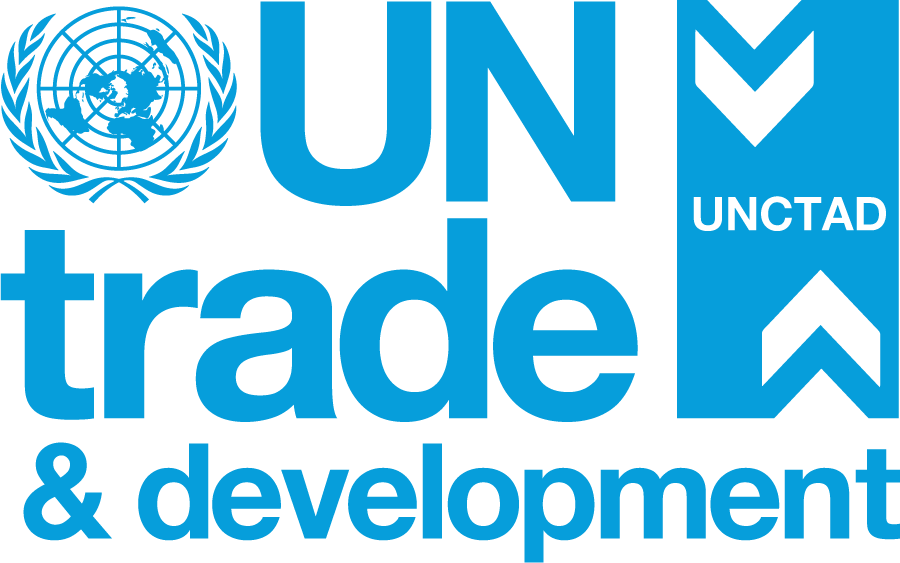A new frontier for trade, investment and sustainable growth
Digital technologies, from smart phones to artificial intelligence, are transforming the global economy at remarkable speed. The scale and pace of this shift risk leaving many countries behind and concentrating gains among a few, while deepening environmental pressures. UNCTAD16 – the UN’s global conference on trade and development (Geneva, 20–23 October 2025) – will spotlight the digital economy as one of its four core themes, alongside investment, finance and trade. The goal: to narrow digital divides and ensure that technology serves broad-based growth.
What’s inside
The following brief distils the main messages and trends shaping UNCTAD16’s digital economy track. It highlights the conference’s focus on practical ways to expand digitally driven growth and how its convening role can help translate uncertainty into opportunity.
Opportunities in the digital economy…
- Digital growth. Expanding digital sectors generate jobs, improve infrastructure and strengthen innovation ecosystems.
- Investment trends. While overall foreign direct investment (FDI) declined from 2022 to 2024, investment in digital sectors rose sharply, with average annual inflows to developing countries nearly doubling.
- Artificial intelligence. The global AI market is projected to reach about $5 trillion by 2033, reshaping industries worldwide.
- Yet many low-income countries remain excluded. Limited infrastructure, high perceived risks and weak regulation still deter investment and constrain trade.
…Concentration is deepening across trade, investment and technology in the digital economy…
- Digital divide. In 2024, digitally deliverable services made up more than 60% of total services exports in advanced economies, 44% in developing ones and only 15% in least developed countries.
- Global concentration. Developing countries exported $1.1 trillion in digital services in 2024, barely a fifth of the global total. Market dominance by a handful of firms, limits competition and squeezes local players.
- Regional patterns. Within the developing world, Asia attracts a third of global digital services investment. About 80% of greenfield projects in digital sectors in the Global South are concentrated in just ten countries, most of them Asian.
- Amplified by AI. Artificial intelligence may widen gaps within and between countries, raising productivity in some sectors while displacing workers in others.
- The cost of exclusion. These divides carry heavy economic and social costs, limiting connectivity, job creation and prospects for growth.
…The environmental footprint of digital growth
- Resource intensity. Demand for energy, water and raw materials is rising sharply as data centres and AI infrastructure expand.
- Energy demand. Power use by 13 of the world’s largest data-centre operators more than doubled between 2018 and 2022, reaching roughly 460 TWh - similar to France’s annual electricity consumption.
- E-waste challenge. Mining impacts, low recycling rates and unsafe disposal raise health and environmental risks. Only 24% of e-waste is formally collected worldwide and about 7% in developing countries, where the environmental burden is greatest.
How does UNCTAD16 address these issues?
- Convening power. UNCTAD16 brings together policymakers, investors and innovators from all regions to explore strategies and cooperation mechanisms that help developing economies capture a fair share of digital opportunities.
- Promoting practical action. UNCTAD16 will showcase how digitalization can support inclusive growth and environmental sustainability through two main approaches:
- Bridging divides. Through the UN’s Global Digital Compact and the 20-year review of the World Summit on the Information Society, UNCTAD16 will highlight how developing countries can use AI, data and digital trade to spur entrepreneurship and empower small businesses, women and rural communities while improving access and skills;
- Encouraging circularity. The conference will put the environmental footprint of digital growth on the policy agenda, addressing raw-material use, water and energy demand, and e-waste management.
More broadly, what is UNCTAD doing to help?
- Data and research. UNCTAD’s work on data governance informed the decision by UN Member States to create a working group under the Commission on Science and Technology for Development.
- Policy dialogue. UNCTAD informs global debates and supports countries in using digital transformation as a driver of development.
- Technical support. UNCTAD co-leads the implementation of the UN’s Global Digital Compact on inclusive digital economy and data governance. In 2025 it chairs the United Nations Group on the Information Society.
- Capacity-building. UNCTAD runs programmes that support digital governance and trade platforms, including e-Trade for All and e-Trade for Women.
Key reports
For detailed analysis and data on digitalization and sustainability, see:
- Digital Economy Report 2024: Shaping an environmentally sustainable and inclusive digital future
- Technology and Innovation Report 2025: Inclusive artificial intelligence for development
About UN Trade and Development (UNCTAD)
UNCTAD is the UN's leading body on trade and development. Founded in 1964, it supports 195 member states with expert analysis, technical assistance, and serves as a platform for intergovernmental dialogue.
UNCTAD helps developing countries make trade, finance, investment, and the digital economy work for inclusive and sustainable development.


